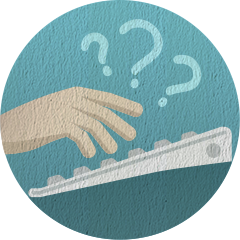Working out the charge on a polyatomic ion.?
-
How does one go about finding the charge on a polyatomic ion? For example we have CN- but then we have a CO neutral molecule. Both species follow the octet rule, but the cyanide molecule has a negative charge whilst the carbon monoxide compound is neutral. Is it due to the way that they're made from constituent ions as opposed to atoms?
-
Answer:
The real way of finding anything in chemistry has to be by experiment. You are asking about predicting the probable charge which is different. Most positive polyatomic ions are made by adding H+ to a molecule with a lone pair. Adding 2 H+s is unlikely. For negative ions make as many bonds as possible with the neutral atoms then add electrons to fill in the gaps. The number of electrons is the negative charge. Eg PO4 Phosphorus can make up to 5 bonds with its 5 outer electrons. A double bond to one oxygen and single bonds to the other 3. Those 3 oxygens are left with 7 outer electrons so can each gain another: PO4 3- Another useful idea is "isoelectronic" - the same number of electrons. N2 is neutral. CN would have one fewer electron so adds one to make CN- CC adds two to form the Carbide ion C2 2- in for example CaC2 CO is isoelectronic with N2 so does not need to gain or lose electrons.
Ecce_Vac... at Yahoo! Answers Visit the source
Other answers
This might help. http://library.thinkquest.org/C006669/data/Chem/bonding/lewis.html#positive Do a search for Lewis Dot + polyatomic ions
Al
Related Q & A:
- Would U.S Customs charge for a $32 package from Japan?Best solution by Yahoo! Answers
- What is a purchase charge on a gift card?Best solution by Yahoo! Answers
- How much do I charge for a brochure?Best solution by Yahoo! Answers
- How do you find the charge on the complex ion?Best solution by chemguide.co.uk
- What is a polyatomic ion?Best solution by ChaCha
Just Added Q & A:
- How many active mobile subscribers are there in China?Best solution by Quora
- How to find the right vacation?Best solution by bookit.com
- How To Make Your Own Primer?Best solution by thekrazycouponlady.com
- How do you get the domain & range?Best solution by ChaCha
- How do you open pop up blockers?Best solution by Yahoo! Answers
For every problem there is a solution! Proved by Solucija.
-
Got an issue and looking for advice?

-
Ask Solucija to search every corner of the Web for help.

-
Get workable solutions and helpful tips in a moment.

Just ask Solucija about an issue you face and immediately get a list of ready solutions, answers and tips from other Internet users. We always provide the most suitable and complete answer to your question at the top, along with a few good alternatives below.